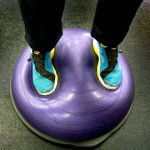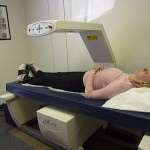Maintaining balance and core strength is key to decreasing your risk of breaking a bone no matter what age you are. Regardless of your bone density, if you don’t fall you will be unlikely to break your wrist, shoulder, or hip. Over 90% of hip fractures are a result of a fall. Even though you… Read more

Binosto
Binosto® is another formulation of alendronate: an effervescent tablet that is dissolved in water. Think Alka-Seltzer. Drop Binosto in room temperature water, it fizzes up and is in solution ready to drink after a quick stir. Since the solution is “buffered,” it is supposed to be less likely than alendronate in the tablet form to… Read more
Bisphosphonates
Bisphosphonates are a class of medicines used to treat various medical problems. In addition to osteoporosis, some bisphosphonates are approved for the treatment of another bone disorder called Paget’s Disease, others are used in an intravenous formulation to treat high blood calcium, and in patients with cancer in conjunction with chemotherapy. The name is based… Read more
Bone
Bone is a composite material that consists of mineral and protein. The crystals of mineral are calcium and phosphate that are called hydroxyapatite. The mineral is bound to protein, which is primarily collagen. This composition provides both strength and resilience. If bone was made only of mineral, it would be more brittle and break easily.… Read more
Bone Breakdown
Tests for bone breakdown, which are markers of osteoclast activity, measures various breakdown products of bone collagen. These are the most common tests: C-telopeptide (CTX) deoxypyridinoline (DPD) N- telopeptide (NTX)

Bone Density Scan
A bone density scan measures the quantity of bone. The most common way to measure bone density is with a dual-energy x-ray absorptiometry called DXA for short. The most common sites of measurement are the hip and lumbar area of the spine. In some instances, the forearm is also measured. Your measurements are compared to… Read more
Bone Formation
Bone formation markers are an indicator of osteoblast activity. All tests are measured from a blood sample. Common tests include: bone alkaline phosphatase (BSAP) osteocalcin procollagen type 1 propeptides (P1NP)
Bone Mineral Density – BMD
Bone mineral density or BMD is the mineral mass of a bone divided by its area. BMD is defined as mass of mineral per unit volume. Therefore, it reflects the degree of mineralization of bone. You will most likely see this term in association with your bone density scan or DXA data. For each bone… Read more
Bone Turnover Markers
Measurement of bone turnover is possible by measuring markers in blood or urine that provide information about activity of bone breakdown and bone formation. Bone turnover markers may be used to estimate rate of bone loss. In combination with results of a bone density scan, bone turnover markers are useful to determine risk of fracture.… Read more
Boniva
Boniva® is a prescription medicine option for treatment of osteoporosis. Boniva is in the class of medicines called bisphosphonates that also includes Actonel, generic alendronate, Atelvia, Fosamax, and Reclast. Bisphosphonates work by decreasing the rate of bone breakdown. Generic Version Available Boniva is often referred to as the “Sally Field drug.” Since Sally Field was… Read more
Breastfeeding
Breastfeeding creates a tremendous calcium demand. In contrast to pregnancy, the skeleton is the main source of calcium. Therefore, a loss of bone occurs but is transient. Bone density is usually restored within six months after weaning your baby. The good news is breastfeeding does not appear to be associated with increased risk of fractures… Read more
